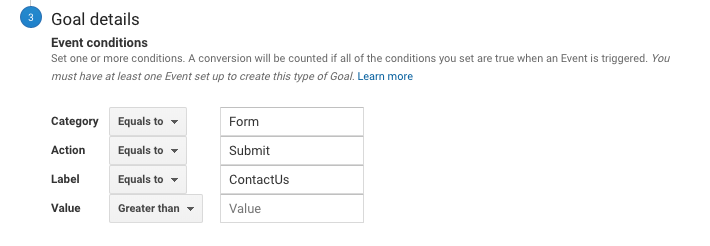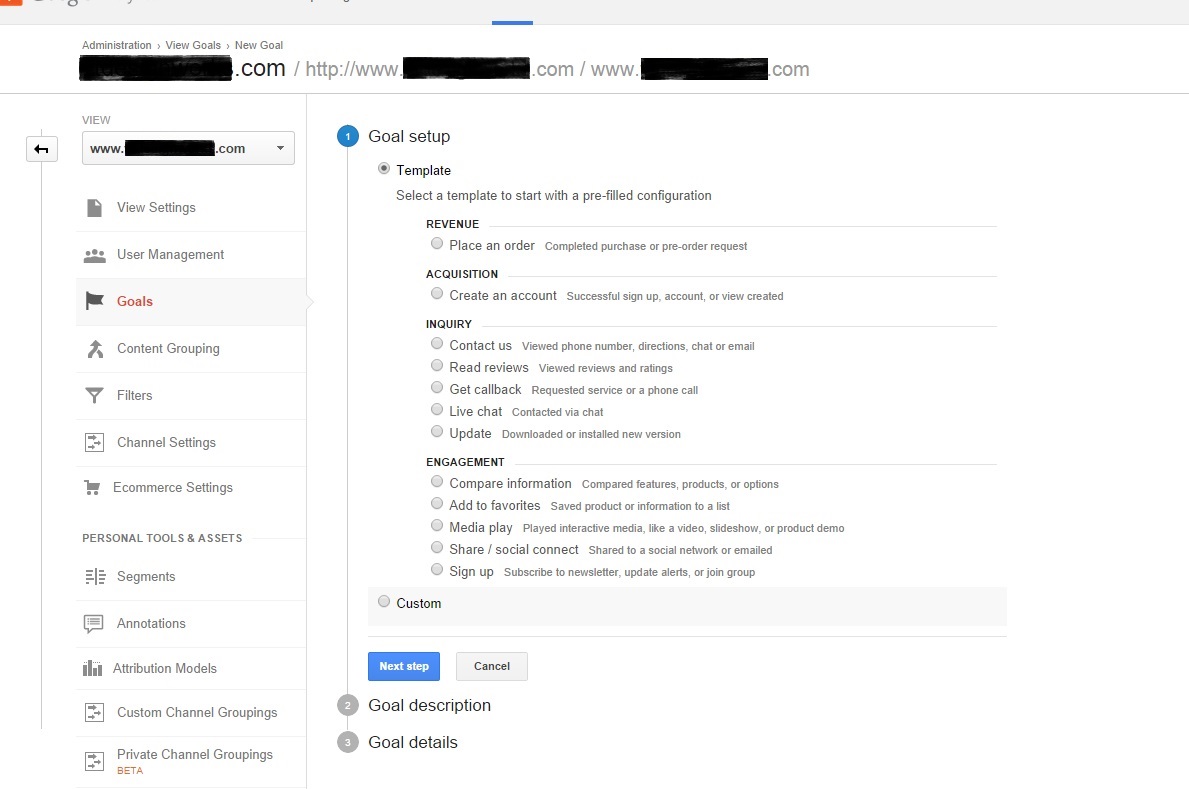Comprehensive Listing of What Data Is Google Analytics Goals Unable to Track
Comprehensive Listing of What Data Is Google Analytics Goals Unable to Track
Blog Article
Debunking Google Analytics Limitations: Reveal What Information Goals Can not Track
In the world of electronic analytics, Google Analytics stands as a powerful tool that provides useful insights into website efficiency and user habits. From the intricacies of customer interaction with vibrant material to the intricacies of cross-device individual trips, these constraints dropped light on areas that may remain obscured from conventional analytics point of views.

Customer Interaction With Dynamic Material
Customer communication with dynamic content plays an important function in recognizing customer behavior on sites and enhancing the total user experience. By tracking customer interactions with dynamic material, internet site owners can acquire important insights into user engagement, choices, and actions - what data is google analytics goals unable to track.
Google Analytics offers numerous devices to track customer communications with vibrant material, such as event tracking and digital pageviews. Occasion tracking allows you to keep track of particular individual actions, like clicking a button or enjoying a video clip, supplying data on just how customers communicate with dynamic elements. Digital pageviews can be utilized to track communications that do not result in a brand-new page lots, offering an extensive sight of customer involvement with vibrant material. By assessing this information, site owners can make educated decisions to boost individual experience and drive conversions.
Cross-Device User Journeys
Exactly how can modern analytics devices track the complex paths users take across several devices in their on the internet journeys? Cross-device customer journeys offer a substantial difficulty for monitoring and examining user habits properly. As users engage with websites or applications making use of various devices such as desktop computers, tablet computers, and smart devices, it ends up being important to comprehend just how they relocate between these platforms to enhance customer experience efficiently.
Google Analytics deals with constraints in tracking cross-device user trips due to privacy issues and technological restrictions - what data is google analytics goals unable to track. While it can supply understandings right into private gadgets' interactions, tracking a seamless user trip throughout numerous gadgets stays a difficulty. This limitation can result in incomplete information and fragmented customer understandings, making it tough for organizations to develop a unified sight of the customer journey
To address this problem, companies can use sophisticated analytics devices that offer cross-device monitoring capacities, permitting them to gain a more holistic understanding of user habits. By leveraging these devices, businesses can connect the gap in tracking cross-device individual journeys and maximize their electronic techniques for a seamless customer experience.
Offline Conversions and Attribution
As businesses browse the challenges of tracking cross-device customer journeys, an additional essential aspect to consider is the world of offline conversions and attribution in the world of data analytics. While Google Analytics provides valuable understandings into online customer habits, it fails when it pertains to tracking conversions that happen offline. This limitation poses a significant obstacle for companies that have both online and offline sales channels.
Offline conversions, such as acquisitions made in physical check my source stores or with phone call facilities, are important to understanding the full customer journey. Without the capability to attribute these offline conversions to certain online communications, companies might battle to accurately determine the influence of their digital advertising and marketing initiatives.
To address this space, organizations can explore alternate solutions such as incorporating CRM systems with on-line analytics tools or using special coupon codes that can be traced back to on the internet projects. By linking the void in between online and offline data, companies can get an extra comprehensive understanding of their customers' habits and enhance their general advertising and marketing approaches.
Individual User Identification
In the realm of data analytics, the capability to precisely determine specific customers throughout numerous on-line touchpoints is an important obstacle for organizations looking for to individualize and maximize their advertising and marketing approaches. While Google Analytics provides beneficial understandings right into customer habits and communications, it drops short in allowing the identification of specific individuals as a result of personal privacy problems and technological restrictions. Google Analytics utilizes distinct identifiers such as cookies to track user sessions and habits, but these do not equate to identifying individual customers in an individual sense.

Data From Secure Pages
In spite of the enhancing frequency of protected web pages on web sites, obtaining information from these encrypted sources provides a special challenge for electronic analytics platforms like Google Analytics. Safeguard pages, suggested by HTTPS in the link, secure data traded between the individual's browser and the web site's server to make sure personal privacy and protection. While this encryption is crucial for protecting sensitive details, it also presents constraints for tracking user habits and celebration analytics data.
Google Analytics deals with barriers in collecting comprehensive details from secure pages because of the security protocols in position. Consequently, certain data factors such as referral resources, keyword searches, and also some user interactions might not be fully caught when customers access an internet site via a safe and secure connection. This constraint can influence the precision and efficiency of the information evaluation, causing voids in comprehending user actions and choices on secure pages.
To navigate this challenge, digital analysts may need to explore alternative tracking methods or leverage other tools specifically developed to gather insights from secure pages. By adapting strategies to accommodate these limitations, services can still acquire useful analytics in spite of the restrictions provided by encrypted connections.
Conclusion
Finally, Google Analytics has restrictions in tracking user interaction with dynamic content, cross-device user trips, offline conversions, specific customer recognition, and information from safe web pages. These constraints impede a detailed understanding of individual behavior and might bring about spaces in data evaluation. Regardless of its useful insights, Google Analytics might not give a total picture of user involvement across various touchpoints. It is essential for organizations official source to be knowledgeable about these restrictions and consider additional devices for a much more holistic sight of their data.
Individual communication with dynamic web content plays a crucial function in understanding individual actions on sites and maximizing the overall individual experience. By tracking customer interactions with vibrant content, web site owners can obtain important understandings into customer interaction, preferences, and actions.
Google Analytics utilizes special identifiers such as cookies to track individual sessions and behavior, however these do not equate to recognizing private users in an individual feeling.
As a result, particular information points such as reference sources, keyword searches, and also some user interactions might not be fully captured when individuals access a website via a protected connection.In final thought, Google Analytics has restrictions in tracking customer communication with vibrant see here web content, cross-device user journeys, offline conversions, individual user identification, and data from safe web pages.
Report this page